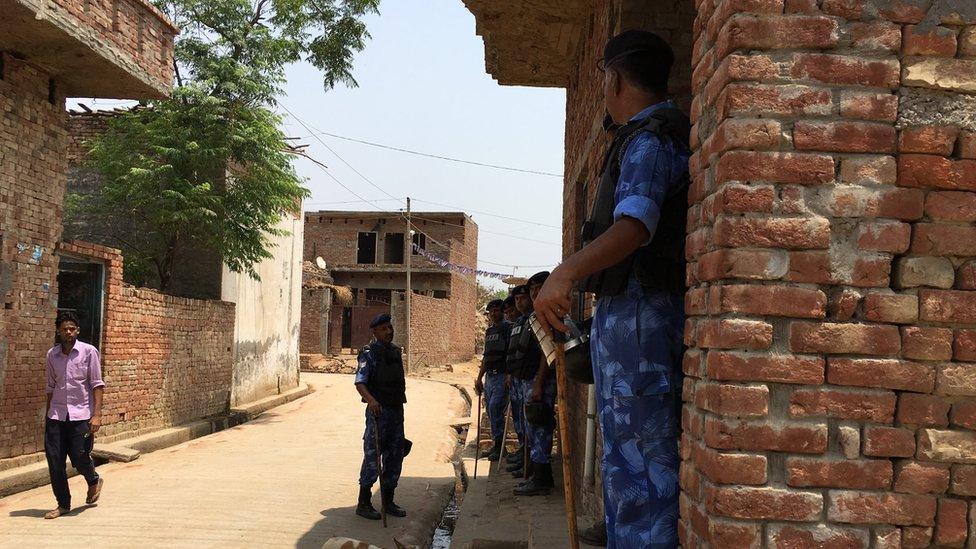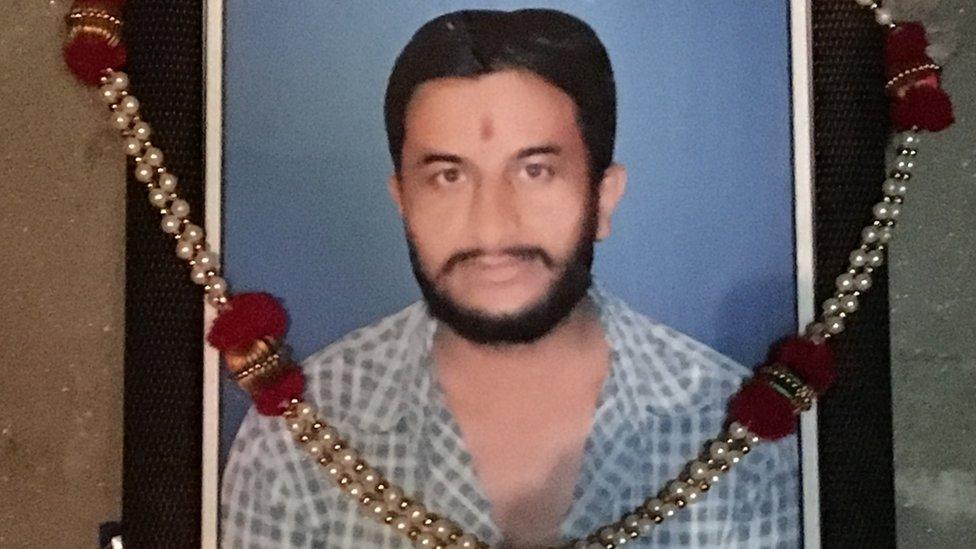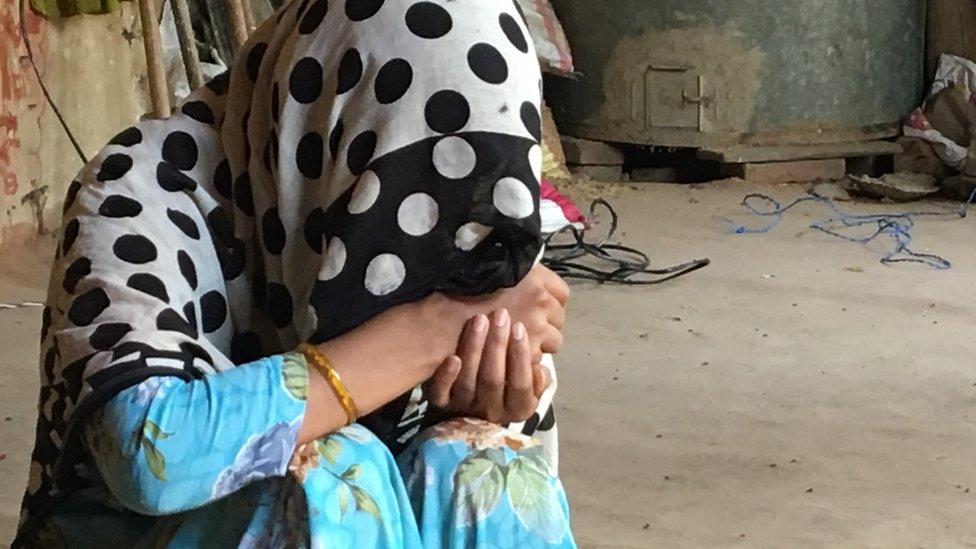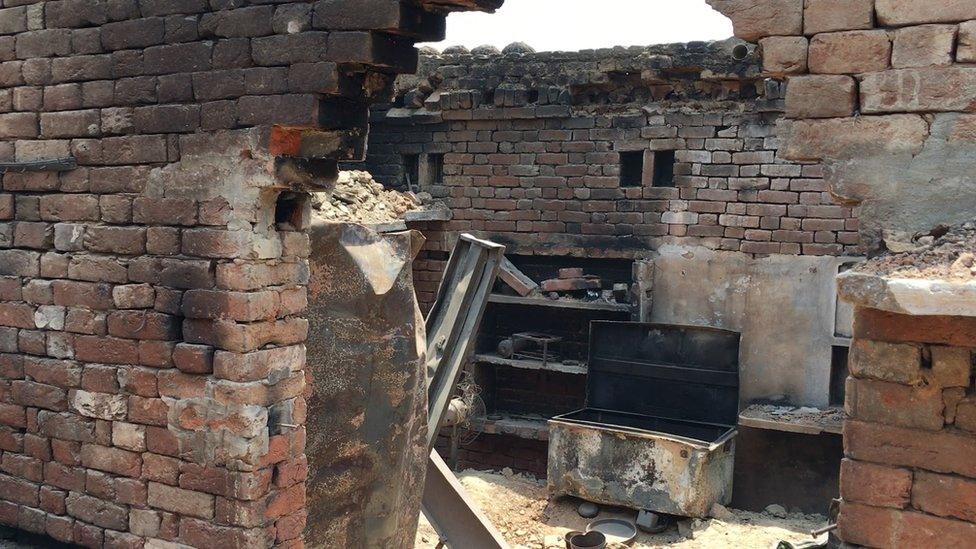Saharanpur: Why did this Indian village erupt into violence?
- Published

An uneasy calm prevails in Saharanpur after recent clashes
Saharanpur in the northern Indian state of Uttar Pradesh was recently the site of violent caste clashes which killed two people, injured dozens and saw more than 50 homes destroyed. BBC Hindi's Zubair Ahmed travelled there to find out what caused the violence to erupt.
"Muslims kill us for being Hindu and Hindus kill us for being chamar," says a despairing Shivraj, 60, as he surveys his damaged home.
Chamar is a pejorative caste term, used to describe Dalits (formerly known as untouchables) who work with animal hide.
India's 200 million Dalits have traditionally been at the bottom of the Hindu caste system and for centuries, they were kept in subjugation by the higher castes. Despite laws to protect them, discrimination remains a daily reality for many of them.
Shivraj alleges that his house was targeted by a mob comprising upper caste men from his own village.
He vows to "permanently leave the village and abandon Hinduism if attacks against the Dalits do not end".
He is referring to the attacks on his Shabbirpur village situated near the northern town of Saharanpur, almost 200km (124 miles) from the capital Delhi.
'Revenge attack'
The first attack took place on 5 May when the upper-caste Thakurs rallied to commemorate Maharana Pratap Singh, a medieval king. Reports suggest the Dalits objected to the rally, which then sparked off clashes between the two communities.
Shimla Devi, 65, shows me her plastered right hand. She says she was beaten up after she tried to prevent the Thakurs from desecrating the village's Dalit temple.
"They damaged our temple. I was pushed, jostled and received blows to my right hand. It was terrifying."
The Dalits say more than 50 of their houses were set on fire by Thakurs.
But the Thakurs have their own stories of loss.
A young Thakur man Sumit, was beaten to death. A father of two children, Sumit, 27, was not even part of the rally. His wife Sunita says her husband was there to meet her aunt but was "ferociously attacked by the Dalits".

This man was beaten to death, allegedly by a Dalit mob

His wife says he was not involved in the violence
The Dalits deny the allegations.
Violence broke out again on 23 May when leading Dalit politician and former state chief minister Mayawati visited the village.
Someone opened fire on the crowd, killing a teenage boy and injuring several others.
Police say they are investigating allegations that it was a "revenge attack" carried out by the Thakurs.
Shabbirpur village has been tense for more than a month now. Home to around 3,500 people, it's a small village by Indian standards. And yet it is a microcosm of the tensions of its caste system.
'Bad publicity'
The Dalits live in smaller, semi-permanent houses. Immediately outside are the colonies of the Thakurs.
The Dalit area showed visible signs of damage - missing doors, collapsed roofs and personal possessions strewn about.
Two officers belonging to the district administration, armed with files and documents, have descended upon the village urging the Dalits to let the administration help clean up the village.
Shivraj is not interested. "The government is embarrassed. The Dalit houses are razed. It's very bad publicity for the new state government. That is why they want to clear all the houses of debris," he tells me later.

The houses in the Dalit quarter of the village have suffered damage
The officials meanwhile explain that the "help" doesn't include rebuilding the burnt houses. They are just here to clean up.
But despite a long-standing caste division in the village, the violence has taken many by surprise.
So what happened? Why did it take a mere religious procession to set off so much violence?
Raghav Lakhanpal Sharma, a young BJP leader and the MP for Saharanpur, claims it was all orchestrated to defame the recently elected state government.
Mr Sharma accuses Ms Mayawati of using Dalit youth to orchestrate violence in the area in an effort to shore up her once ruling party's flagging popularity.
He also blamed the Bhim Army - an organisation of Dalit youth led by charismatic leader Chandrashekhar Azad.
Amit Lohani, a local leader of the Bhim Army, denies Mr Sharma's allegations.
"Bhim Army was formed two years ago to unite Dalit youth and to educate them. It was created to fight the inhuman discrimination being carried out against us by the upper castes," he tells the BBC.
'Old equations are changing'
Amitabh Yash, a senior police officer sent by the state government to assess the situation on the ground in Shabbirpur, says however that the Bhim Army was involved in the violence and adds many cases have been registered against them
But even Mr Yash admits the caste violence has its roots in the aspirations of those who are tired of having lived in subjugation for centuries.
"Old equations are changing. Every community is changing and aspiring to acquire what others have acquired. Everyone wants to be treated equally."
Social activist Dinkar Pathak agrees.
"That's at the heart of recent incidents of violence not just in Shabbirpur but across India. They (Dalits) are coming out on to the streets demanding social justice; they want a share in political power. It's a long fight, but a just fight"
Meanwhile, in Saharanpur, the situation is far from normal.
An uneasy calm prevails between the two communities, but it is clear that they continue to live in fear of one another.